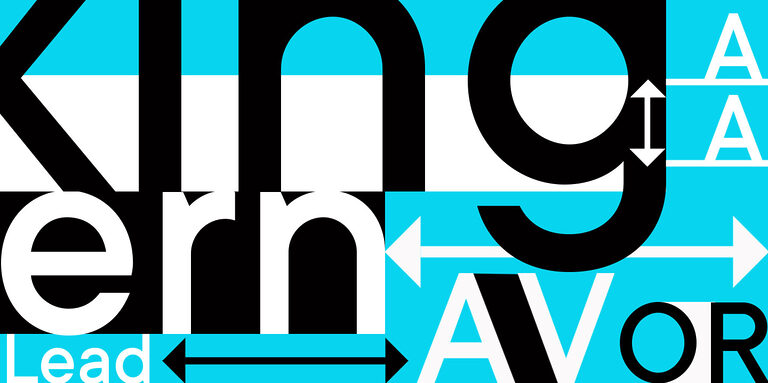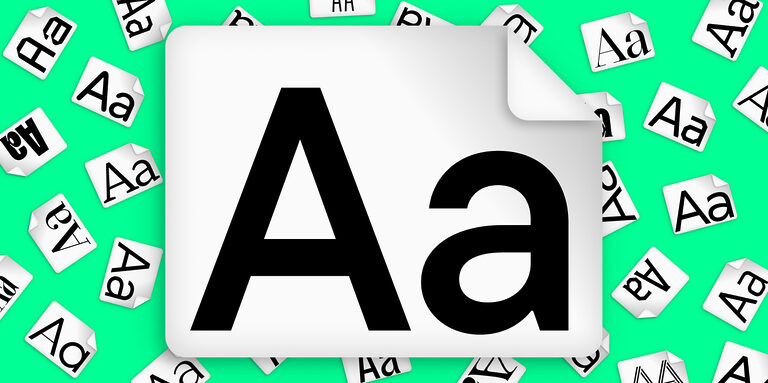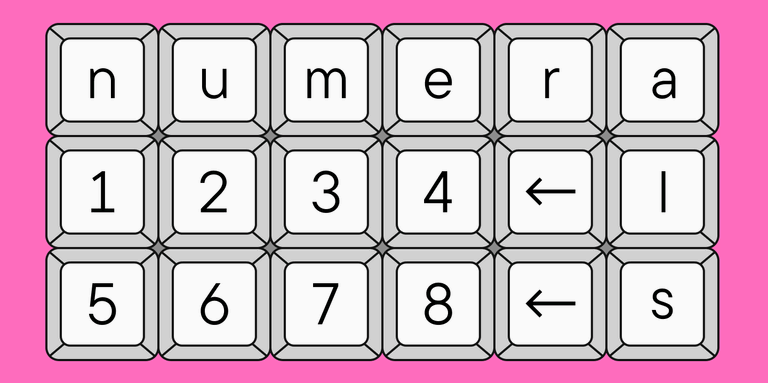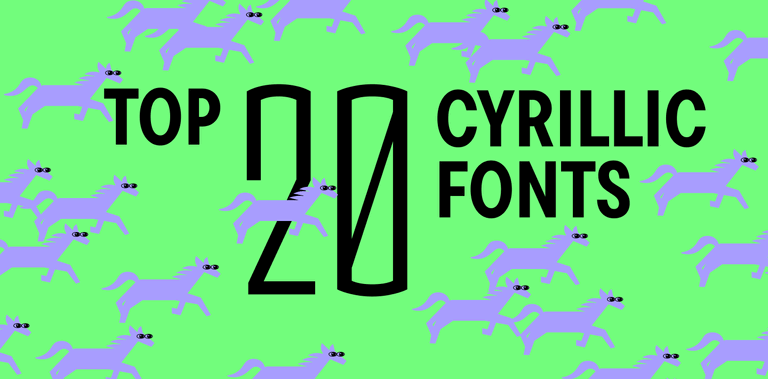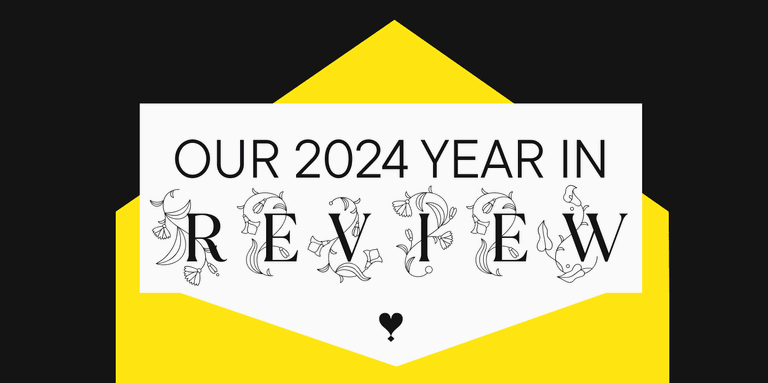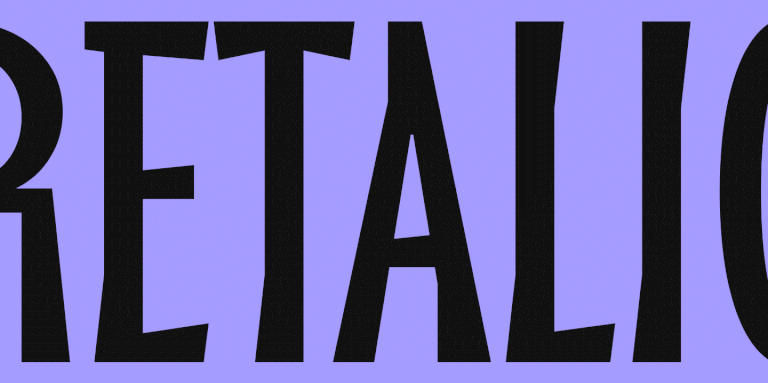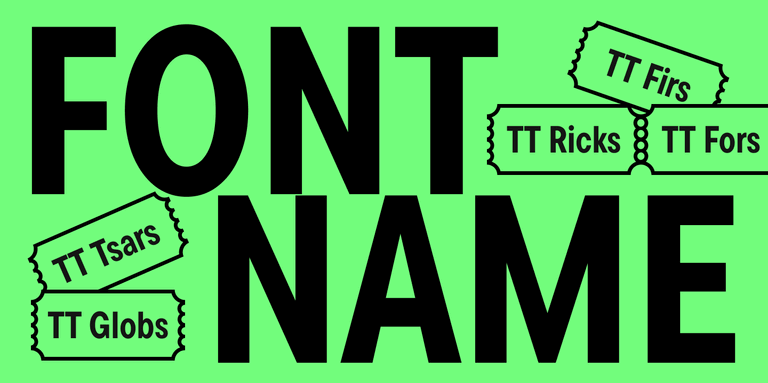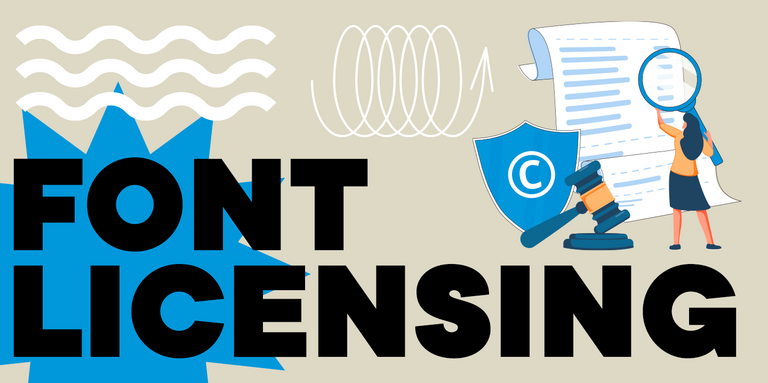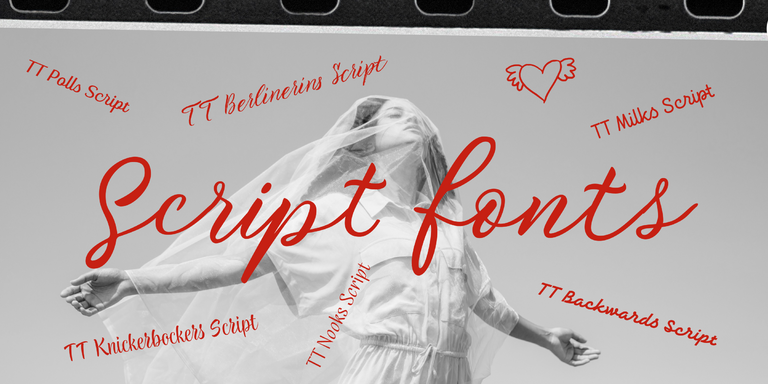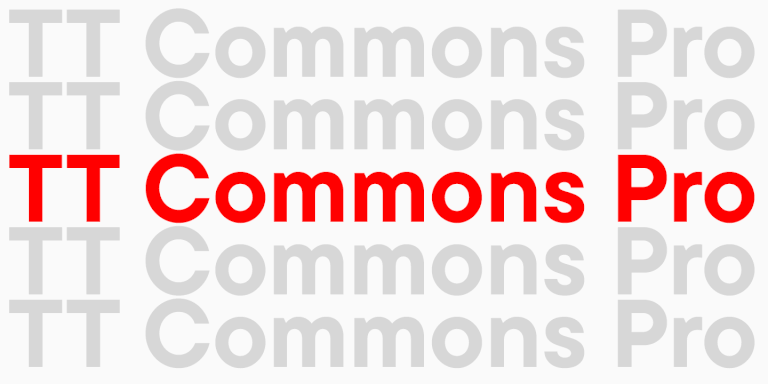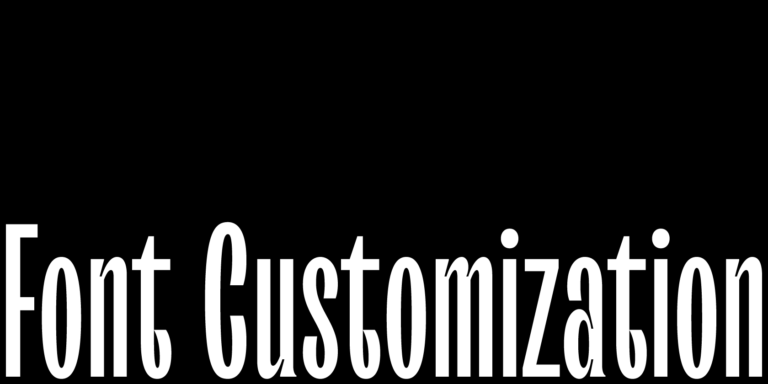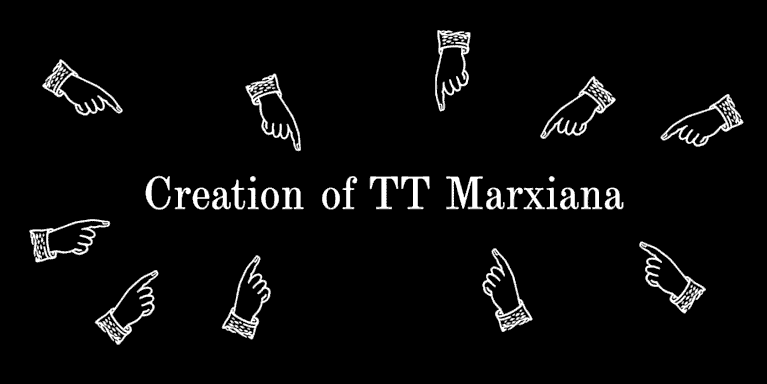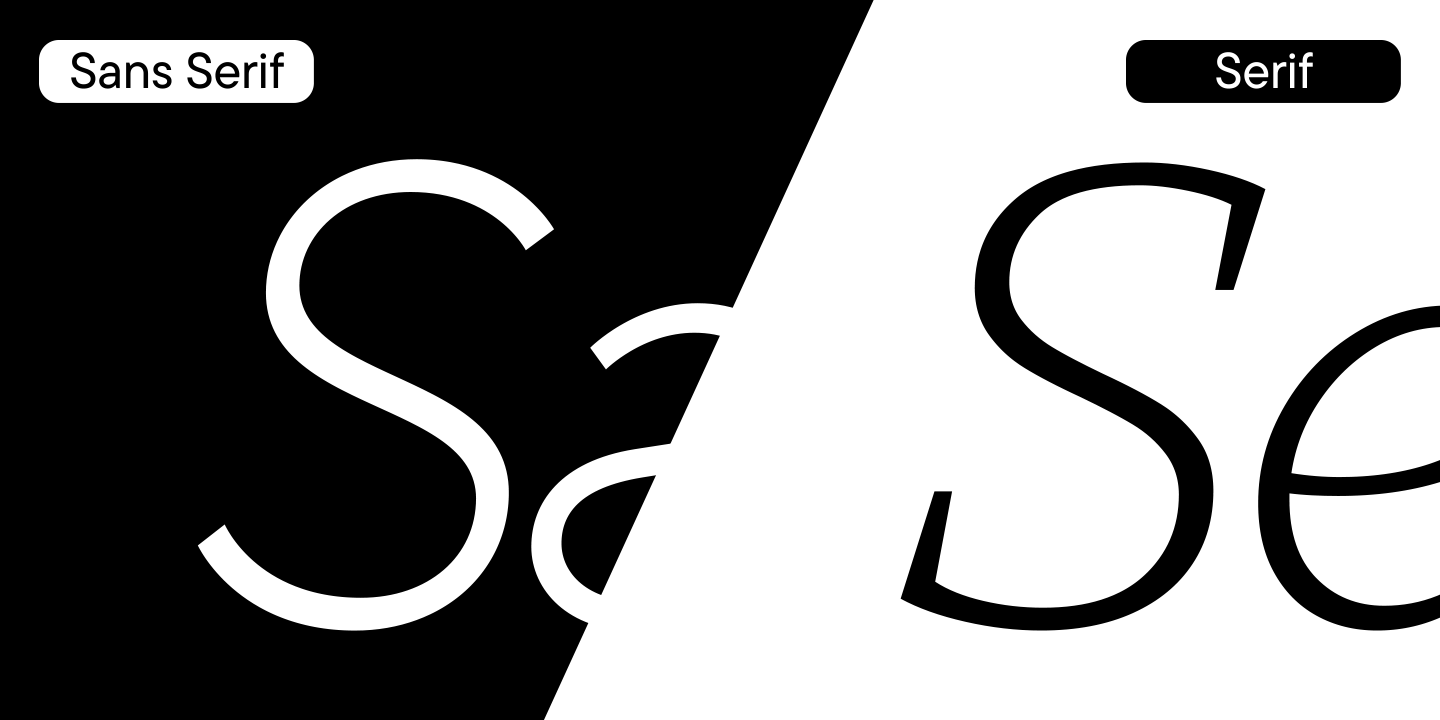
Visita los sitios web de tres de tus marcas favoritas y trata de analizar qué emociones te generan. Ya sea ropa o calzado, automóviles o electrónica, cosméticos o accesorios, cada empresa tiene su secreto: quieren convertirse en parte de tu vida.
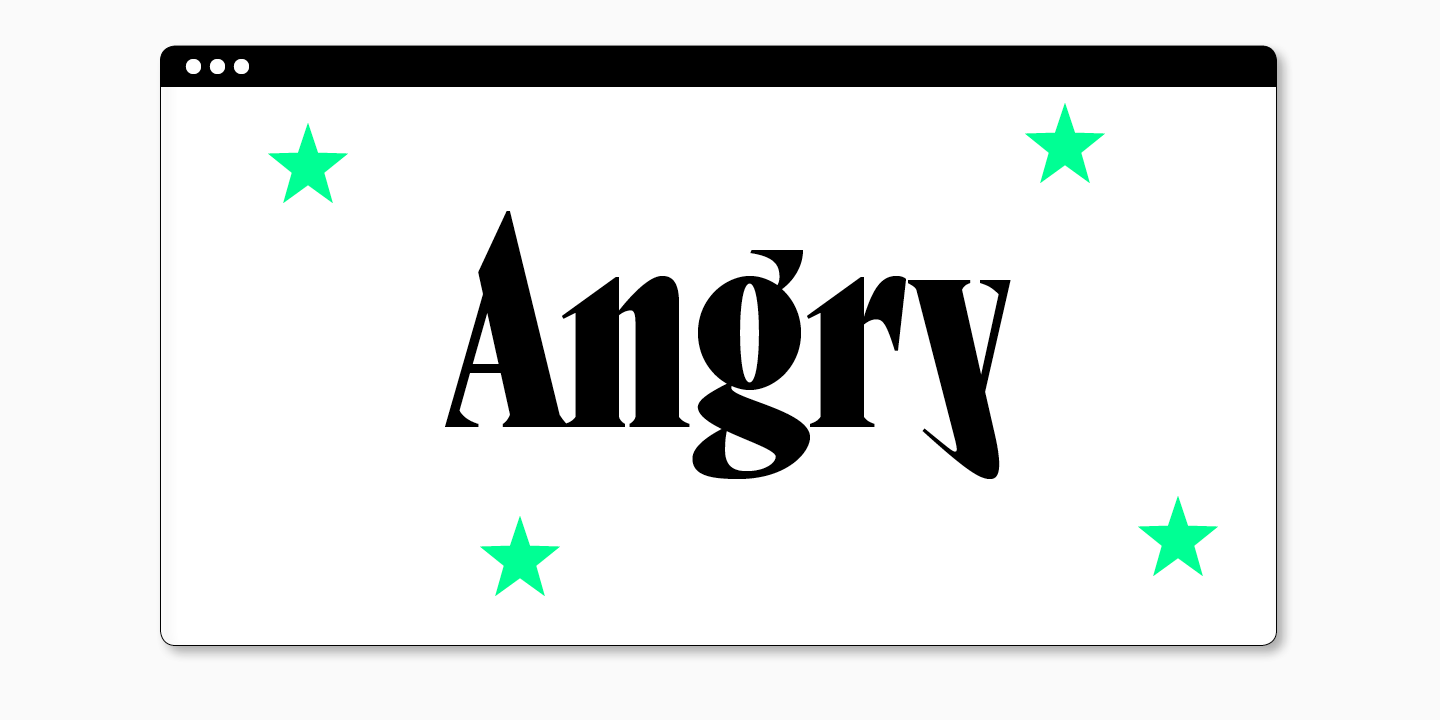
Las emociones que generan estos productos y el estilo de vida con el que se asocian son una parte esencial del branding.
Al abrir por primera vez el sitio web de una empresa, aún no conoces su historia, la calidad de sus productos ni sus precios. Ves información, pero no has tenido tiempo de leerla. Sin embargo, las asociaciones ya están ahí, y la razón de esto es la tipografía que utiliza la marca.
¿Por qué es importante elegir la tipografía adecuada?
La tipografía es la voz de una marca. Al igual que con una voz, las palabras transmiten información, pero son el tono y la entonación los que generan emociones. En el caso de la tipografía, esto se logra a través del estilo con el que están compuestas las palabras.
Así como las personas aprenden a gestionar su voz profesionalmente para causar la impresión deseada y afectar la percepción de lo que dicen, las marcas utilizan familias tipográficas para lograr este propósito. ¿Económico o lujoso, moderno o clásico, sostenible o tecnológico? La tipografía lo comunicará.
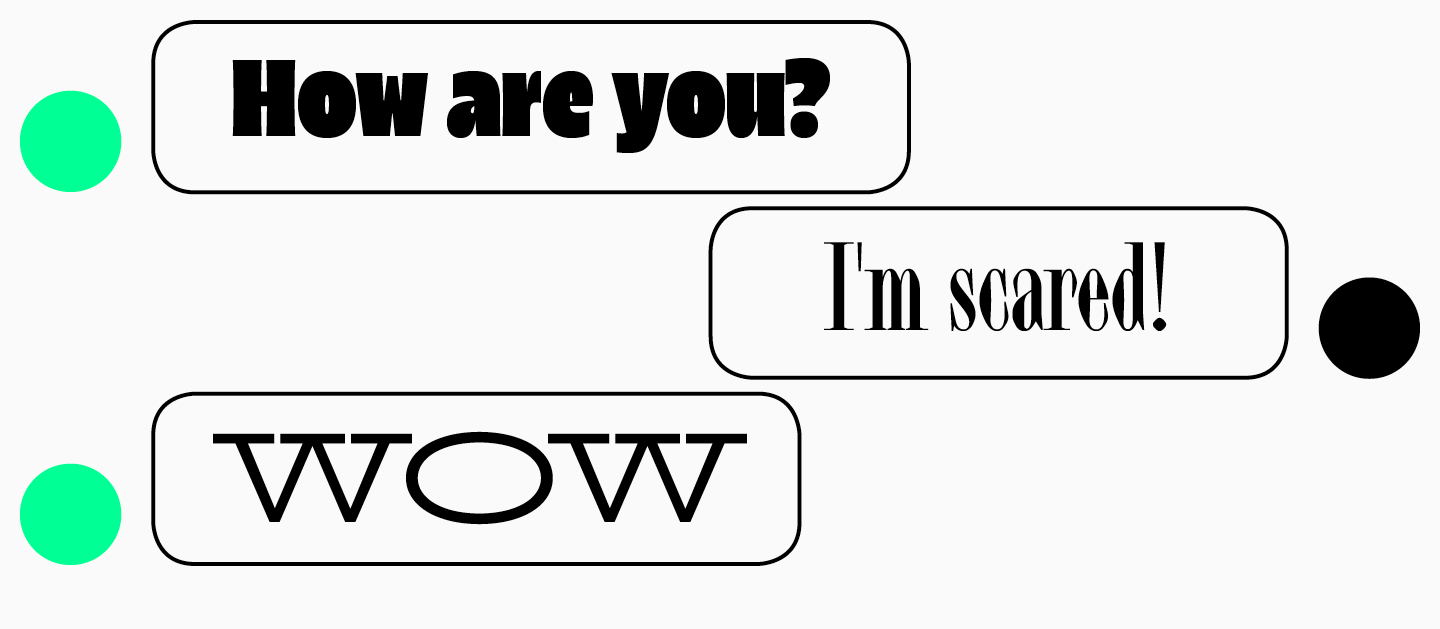
Elegir la tipografía adecuada ayuda a captar la atención del público objetivo incluso antes de que conozcan los productos de la empresa. Sin embargo, si te equivocas en la elección, podrías generar emociones contradictorias que impidan establecer una conexión con la marca.
Es similar a cuando alguien intenta hablar con confianza sobre sí mismo o sus logros, pero sientes incertidumbre, como si te estuvieran engañando. Tal vez sea su voz temblorosa o una entonación fuera de lugar lo que lo delata.
Para que la tipografía transmita las asociaciones deseadas y se integre de manera armoniosa con la identidad de la marca, es crucial prestar especial atención a la elección de la familia tipográfica adecuada.
Lo esencial sobre las antiguas
La tipografía moderna ofrece una amplia variedad de fuentes para los diseñadores, pero todas se dividen en categorías principales. Las más populares son las antiguas y los grotescos, que se utilizan en la mayoría de las marcas contemporáneas, incluidas las más grandes.

Distinguir las antiguas es bastante sencillo: son fuentes con serifas.

Las antiguas son una categoría amplia de fuentes que, a su vez, se divide en subcategorías. Principalmente, se distinguen cuatro tipos de fuentes con serifas: antigua de estilo antiguo, transicional, moderna y slab serif (Serifa de bloque). Estas se diferencian entre sí por la forma de las serifas, el contraste y la inclinación de los óvalos.
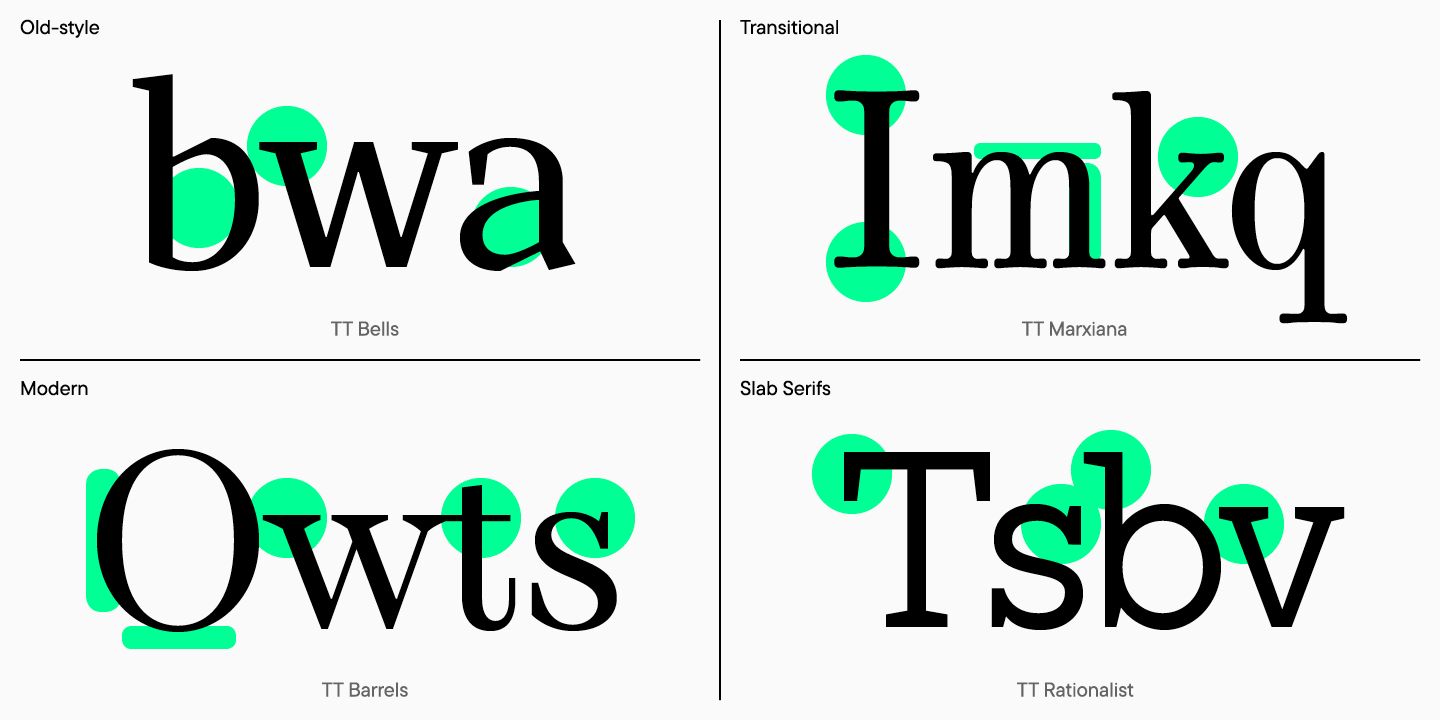
Puedes leer más sobre los tipos de fuentes en la obra de Robert Bringhurst, «Los elementos del estilo tipográfico», o consultar una clasificación más moderna y concisa en el libro «Letter Fountain» de Taschen.
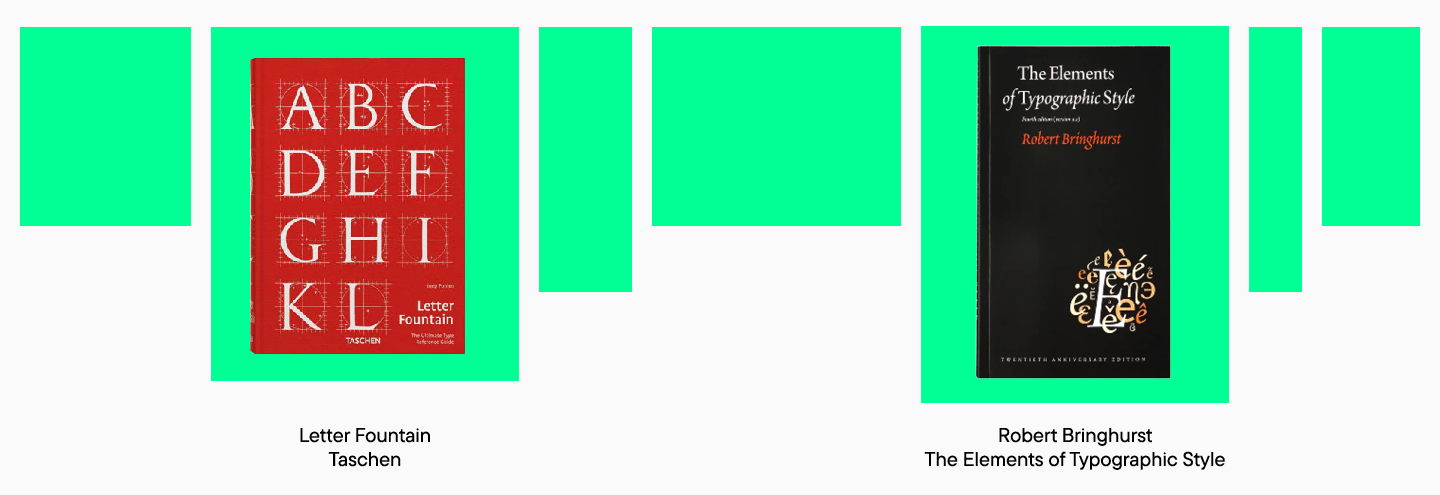
Cuándo se debería elegir una antigua
Se puede afirmar con seguridad que la industria editorial es el ámbito más amplio de aplicación para las fuentes con serifas. La mayoría de los libros, revistas, folletos y carteles están impresos con antiguas. Estas tipografías atraen la atención y pueden lucir elegantes y refinadas, por lo que son utilizadas con frecuencia por quienes están relacionados con el arte, como organizadores de exposiciones y festivales de cine.
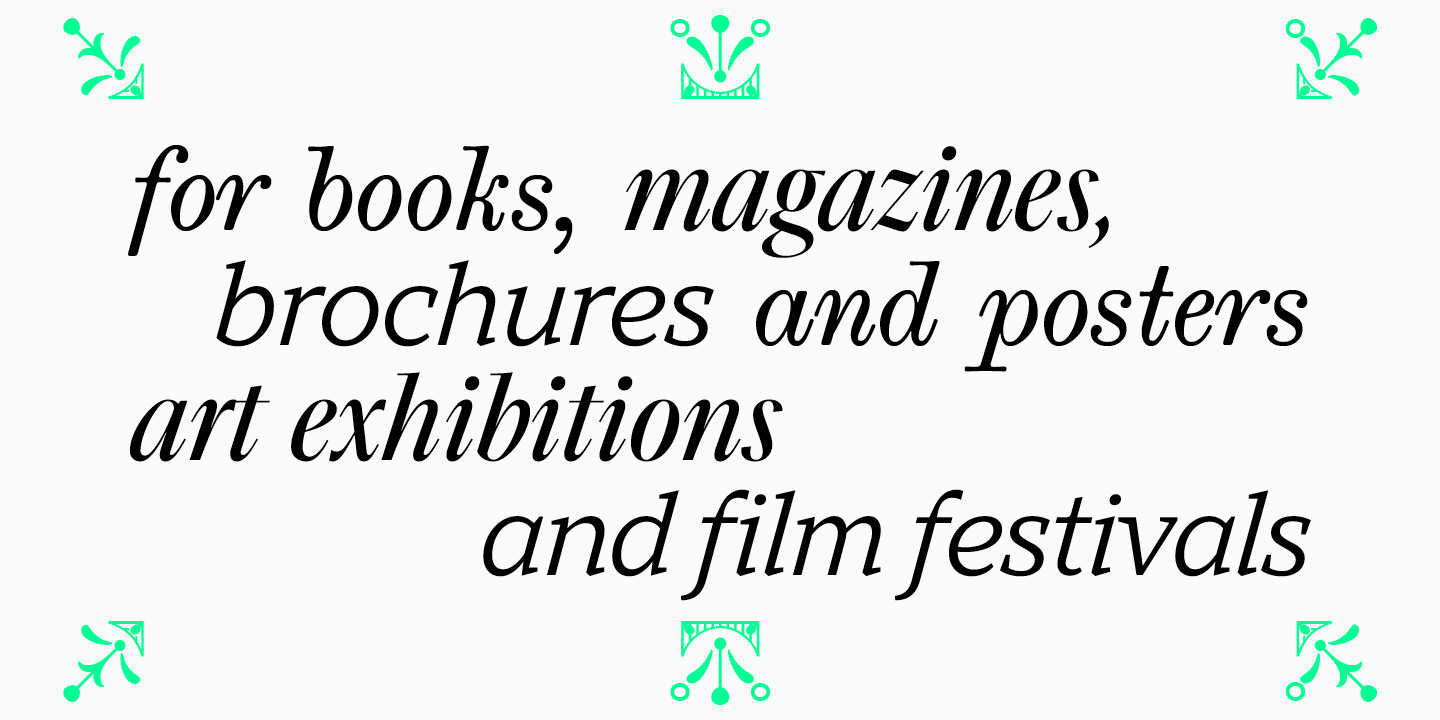
Las fuentes con serifas pueden ser una herramienta bastante versátil, dado el amplio rango de familias tipográficas disponibles. Sin embargo, es importante elegir antiguas con cuidado, analizando detenidamente las emociones que transmite cada tipografía.
Cabe destacar que estas fuentes suelen presentarse en familias extensas, es decir, un solo conjunto tipográfico puede incluir múltiples estilos e incluso categorías. Es común encontrar en una misma familia una antigua decorativa, con un carácter más expresivo, y una antigua para texto, con características más neutrales.
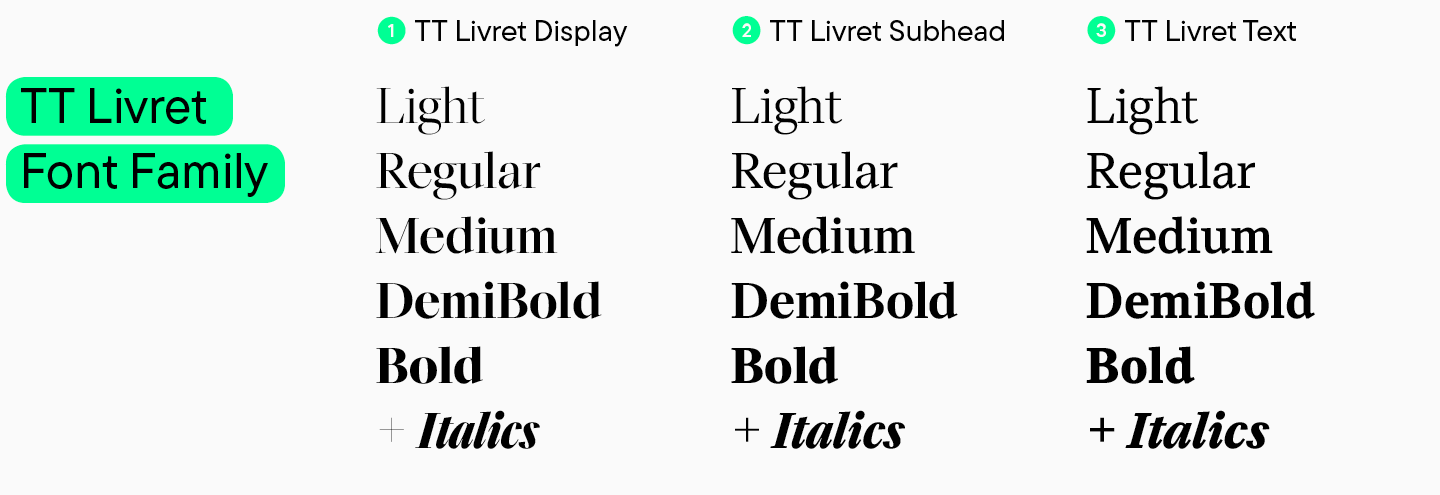
La antigua decorativa es ideal para titulares o textos grandes, ya que su carácter es más evidente y sus elementos decorativos son más visibles. Por otro lado, la antigua para texto suele acompañar a la decorativa y se utiliza para grandes bloques de texto, gracias a su excelente legibilidad y un carácter más neutral. El número de subfamilias puede ser mayor, dependiendo del ámbito de aplicación de la fuente. Por ejemplo, en TT Livret, creada por el estudio TypeType, hay tres subfamilias: decorativa, para texto y para encabezados secundarios. Al ampliar la cantidad de estilos, los estudios permiten usar una misma familia tipográfica para diferentes tareas.
¿Qué puede contar una antigua sobre una marca?
Las antiguas suelen ser la elección de marcas cuyos principios se basan en el respeto por las tradiciones y la historia. Las fuentes con serifas suelen evocar la sensación de una marca clásica y serena, pero también pueden transmitir estatus y elegancia.
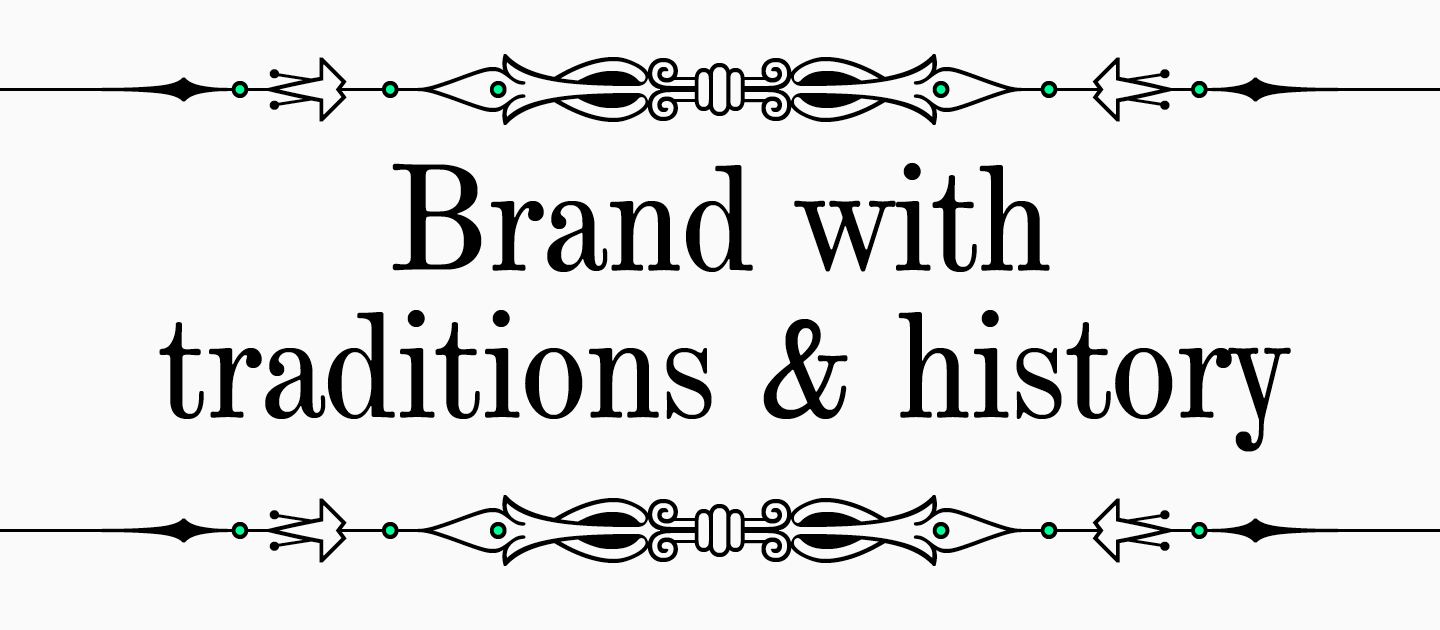
Los medios tradicionales, las revistas de alta costura y las marcas de lujo suelen recurrir a las antiguas. Las fuentes con serifas son ideales para empresas que se enorgullecen de haber cultivado y desarrollado su marca durante años, mejorando la calidad mientras mantienen sus principios fundamentales. Las antiguas generan una sensación de fiabilidad y seguridad, por lo que también son adecuadas para sectores como la banca o la medicina.
Ejemplos de antiguas en el diseño
Para comprender mejor las asociaciones que evocan las antiguas, echemos un vistazo a marcas conocidas que han optado por fuentes con serifas.
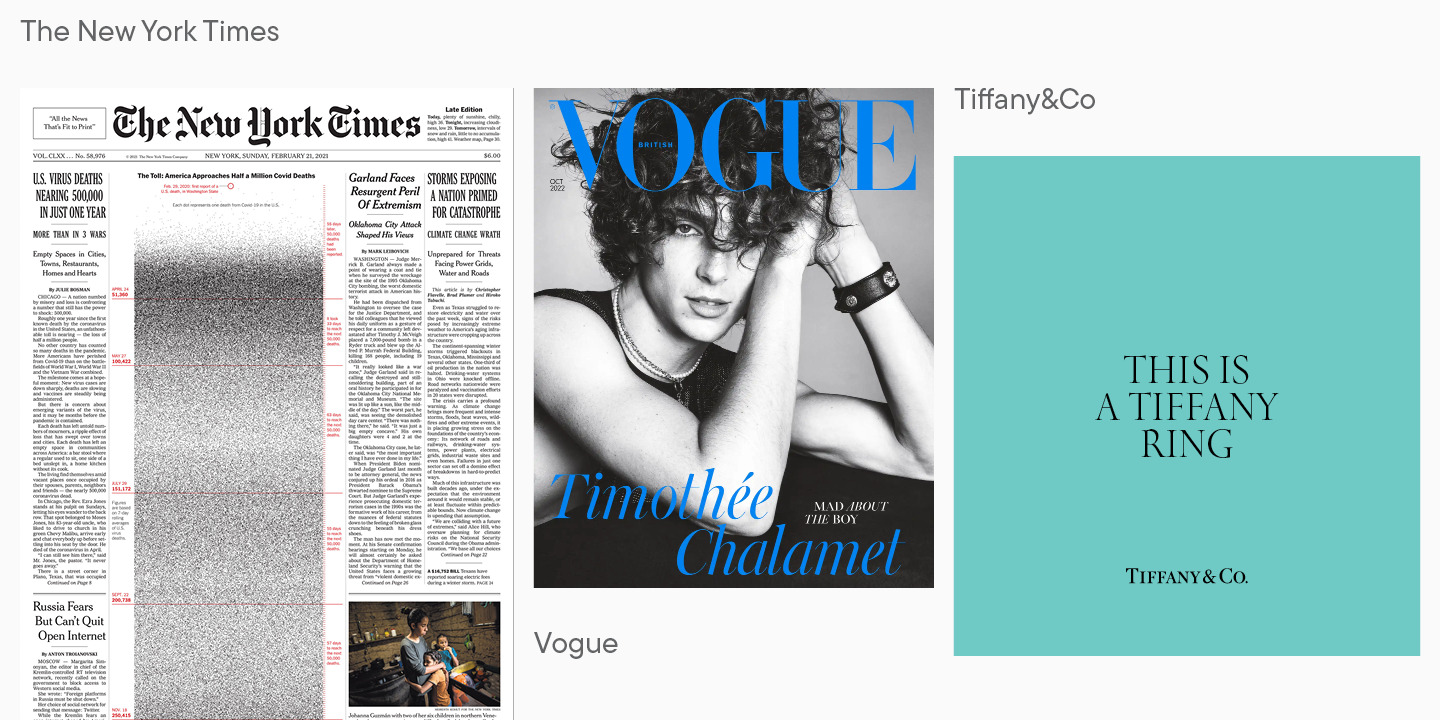
Lo esencial sobre los grotescos
Los grotescos son, en muchos aspectos, la antítesis de las antiguas. Si las antiguas se distinguen fácilmente por sus serifas, los grotescos destacan por su ausencia de ellas. Estas tipografías son minimalistas y cuentan con un amplio campo de aplicación. De hecho, puedes estar seguro de que la mayoría de los sitios web que visitas utilizan un grotesco. Además, durante los procesos de rebranding, las grandes marcas a menudo sustituyen su tipografía anterior por una familia sin serifas.
Los grotescos tienen un diseño simple y ordenado, lo que los convierte en fuentes universales dentro de la tipografía. Al igual que las antiguas, los grotescos se dividen en subcategorías. Se distinguen los grotescos antiguos, los neo grotescos, los humanísticos y los geométricos.
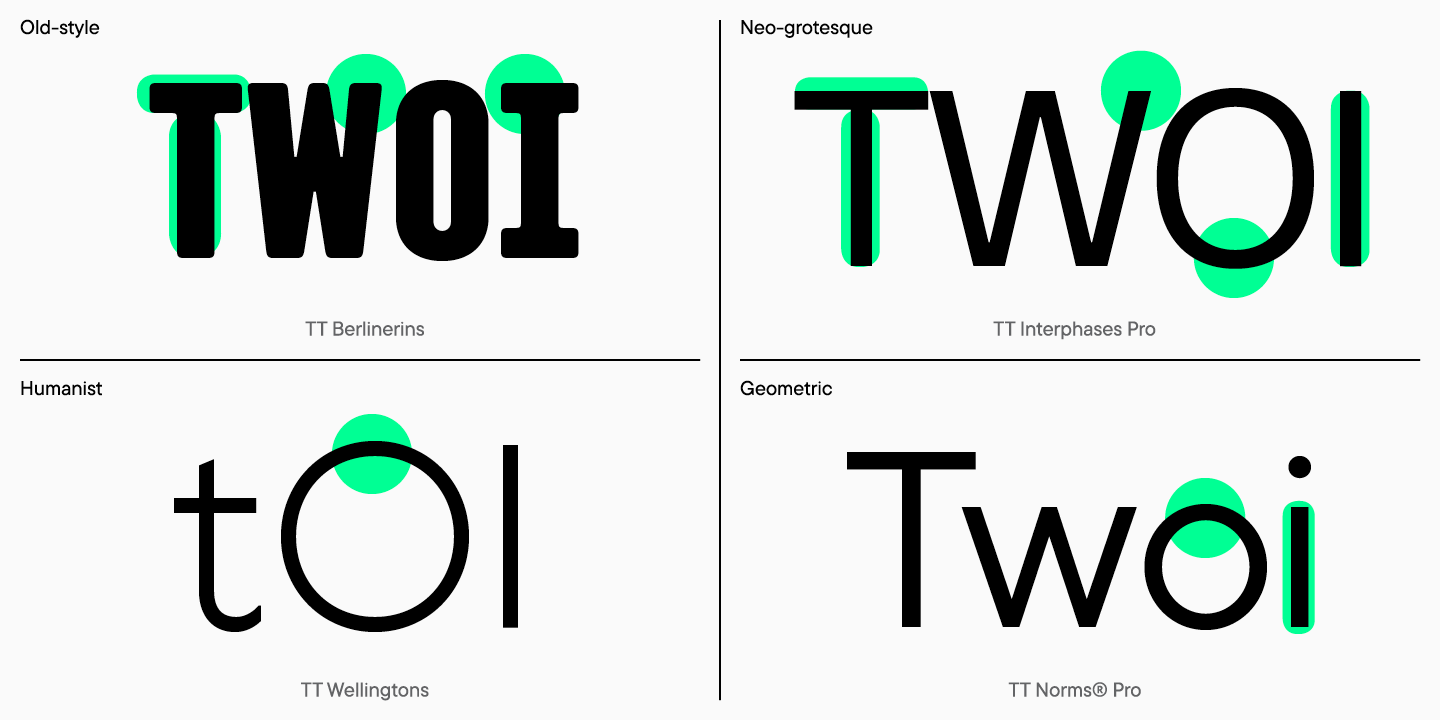
Al igual que las antiguas, los grotescos pueden lanzarse en familias extensas que incluyen tipografías decorativas y para texto. A menudo, estas familias se amplían después del lanzamiento inicial, agregando nuevas subfamilias. Por ejemplo, en los casos de TT Norms® y TT Commons™, dos de los mayores éxitos de TypeType, se han publicado varias ampliaciones. Además de las versiones para texto y decorativas, estas familias han incorporado estilos Condensed, Expanded e incluso monoespaciados.
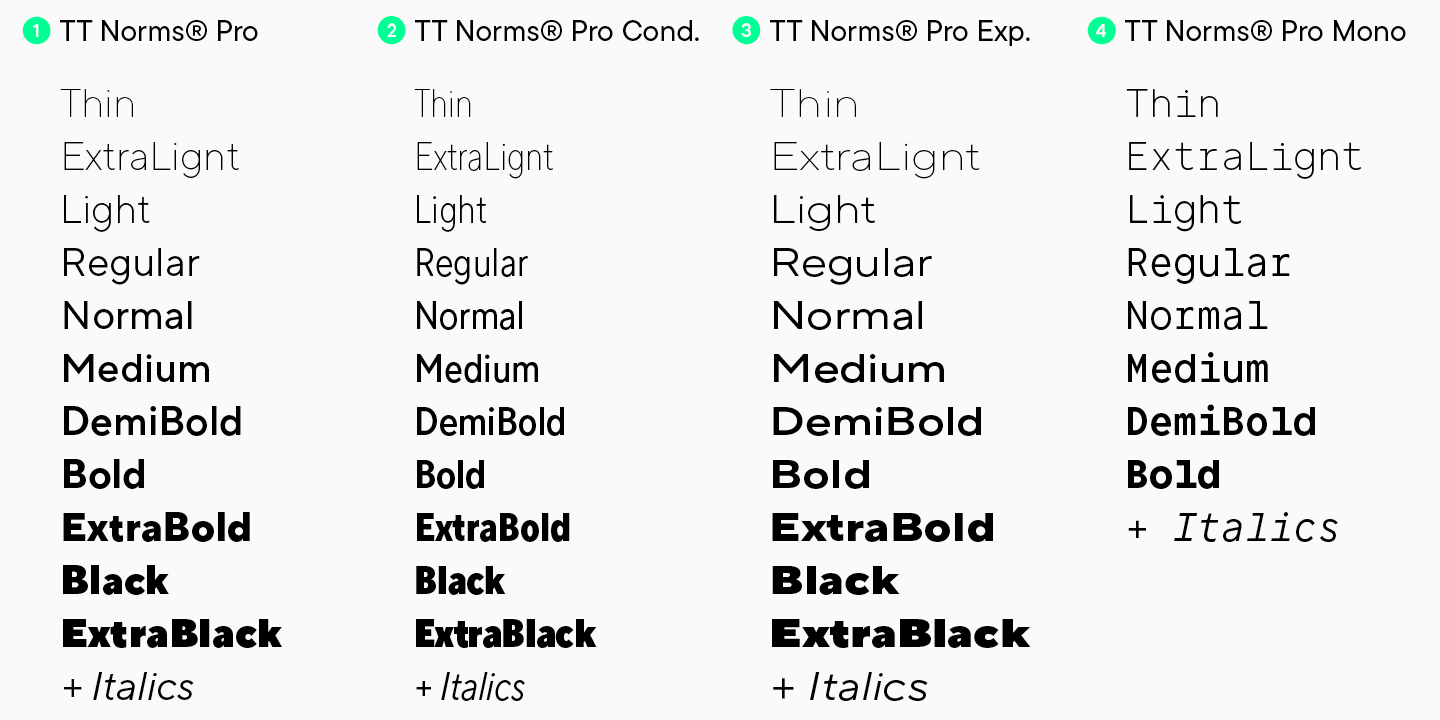
Cuándo se debería elegir un grotesco
Los grotescos pueden utilizarse prácticamente en cualquier lugar gracias a su neutralidad y simplicidad. Sitios web, catálogos electrónicos, presentaciones y aplicaciones móviles suelen estar diseñados con grotescos. También es común encontrarlos en letreros de tiendas y restaurantes, en productos impresos y en diseños de empaques.
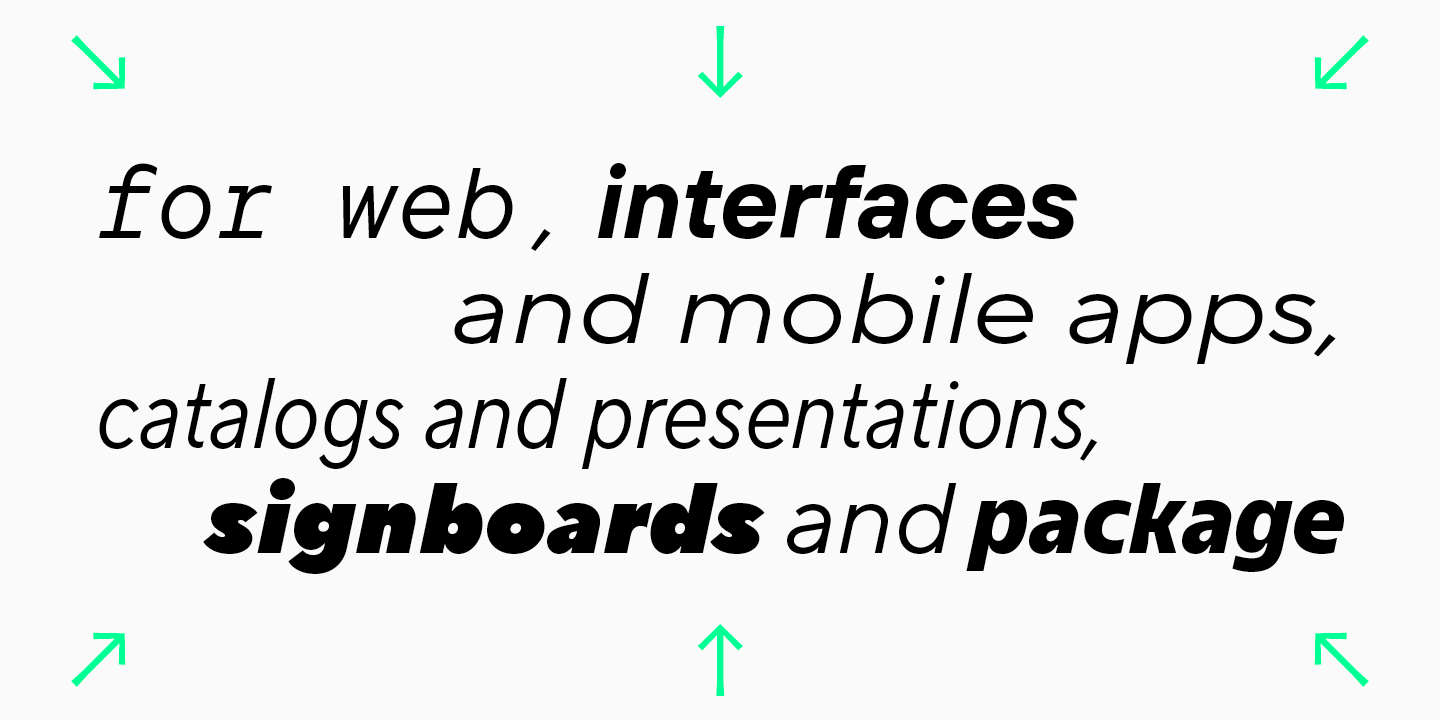
Sin duda, los grotescos son los favoritos de la mayoría de los diseñadores contemporáneos.
¿Qué puede contar un grotesco sobre una marca?
Modernidad, ligereza, comprensión de las tendencias y apertura al contacto son las cualidades que la mayoría de las personas perciben al ver un grotesco en el sitio web de su marca favorita.
Los diseñadores tipográficos, al crear grotescos, eliminan las serifas, y las marcas, al elegirlos, eliminan barreras innecesarias en la comunicación con su audiencia. Las marcas que optan por fuentes sin serifas buscan acercarse a sus consumidores, integrándose de manera armoniosa en sus vidas.
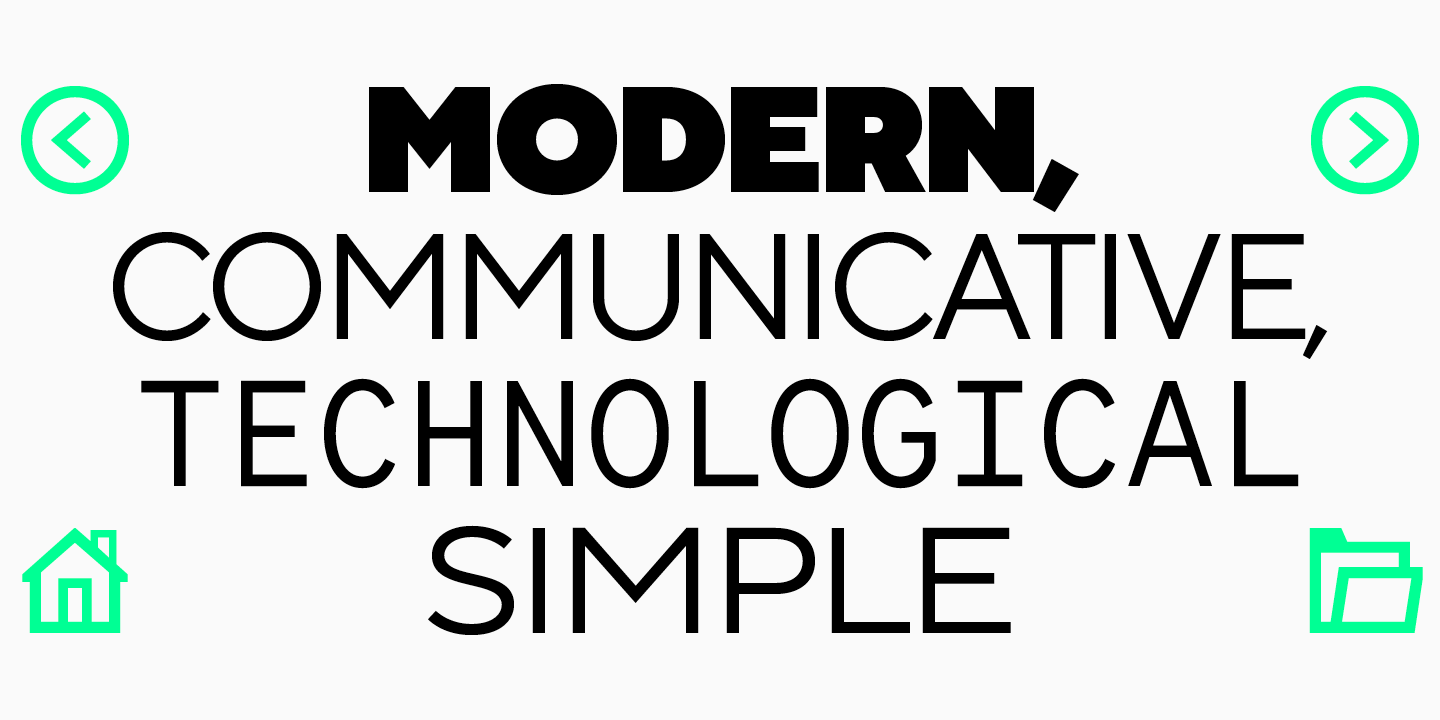
Tecnología y experimentalismo, rechazo de convenciones innecesarias, disfrute del momento: estos son los mensajes que los grotescos también aportan al posicionamiento de las marcas.
Ejemplos de grotescos en el diseño
Conoce más de cerca los grotescos explorando ejemplos de cómo se utilizan las fuentes sin serifas en el diseño contemporáneo.
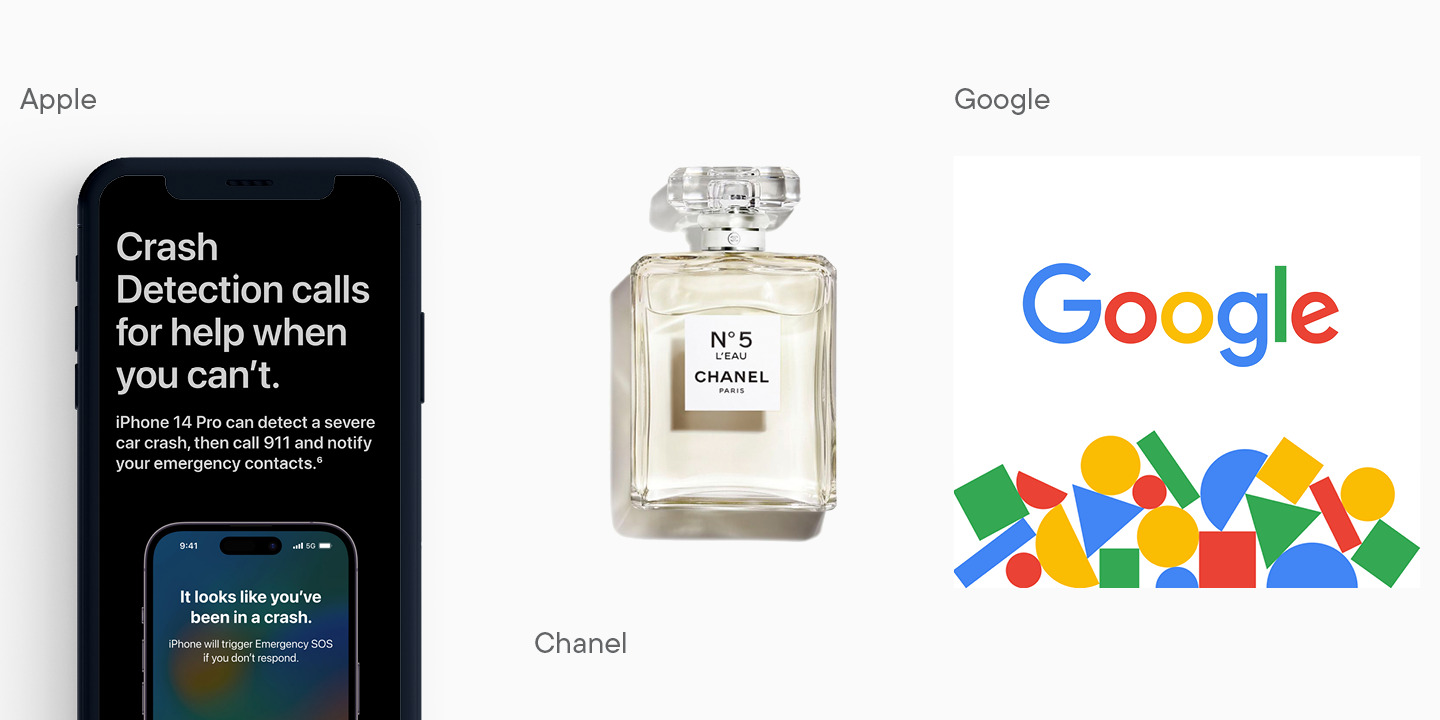
Principales diferencias entre las antiguas y los grotescos
La diferencia más evidente entre los grotescos y las antiguas son las serifas. En las antiguas, las serifas están siempre presentes, mientras que en los grotescos están ausentes. Sin embargo, esta diferencia por sí sola no basta para decidir en qué categoría buscar una fuente para un proyecto.
Las diferencias visuales entre estas familias tipográficas se pueden percibir incluso sin enfocarse en las serifas. Los grotescos, visualmente, lucen más simples y ordenados, en parte debido al bajo contraste entre los grosores de los trazos. En las antiguas, las partes más delgadas de las letras pueden diferir significativamente de las más gruesas, algo particularmente evidente en las antiguas decorativas.
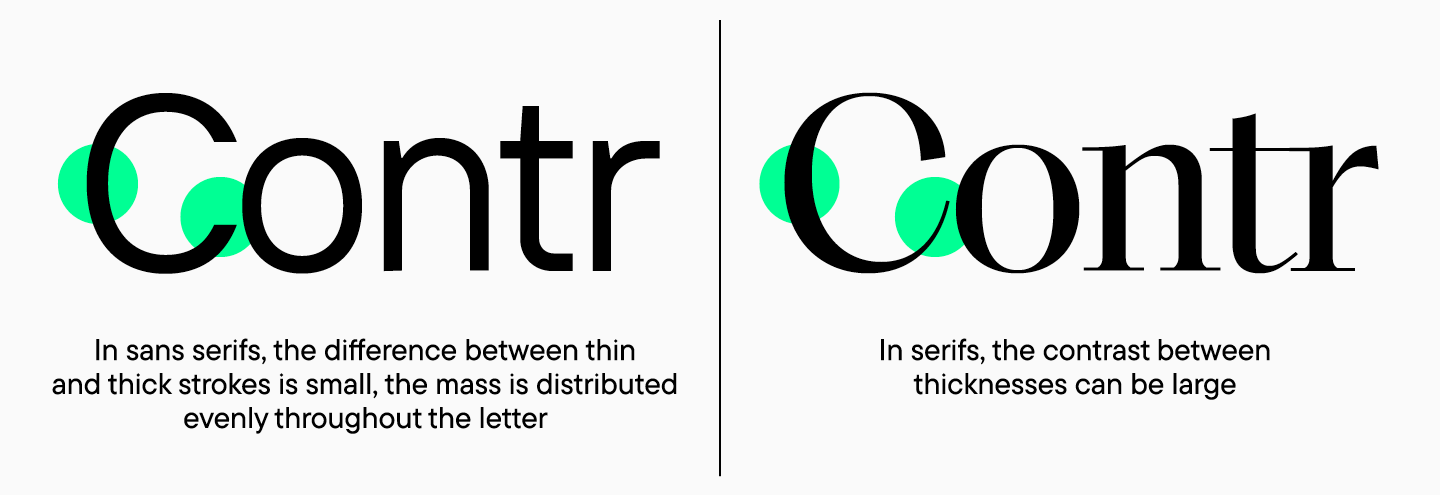
El contraste entre las letras mayúsculas y minúsculas también varía. En los grotescos, este contraste es mínimo, lo que hace que el texto impreso luzca neutral, mientras que en las antiguas, este contraste puede ser significativamente mayor. Sin embargo, las antiguas modernas para texto pueden tener un contraste reducido
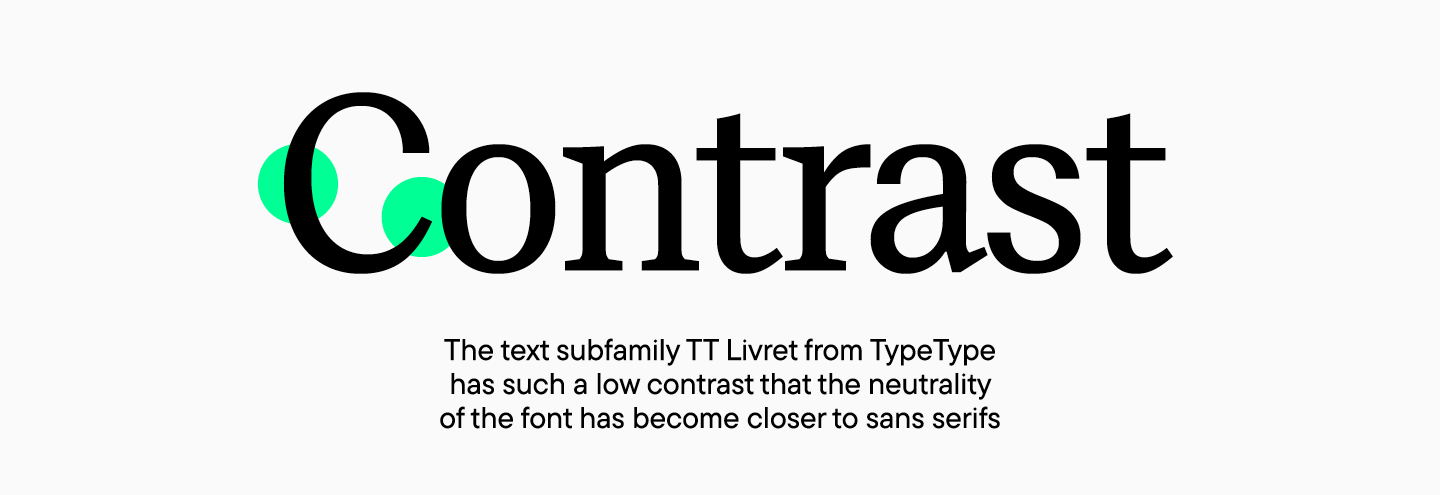
Las asociaciones que generan los grotescos y las antiguas también son diferentes. Las fuentes con serifas suelen describirse como clásicas, elegantes o formales, mientras que los grotescos se califican con mayor frecuencia como minimalistas, simples y ordenados.
Cómo decidirse por una tipografía
Para encontrar una tipografía que refleje los valores de la marca, es fundamental tener claro qué mensaje se desea transmitir al público. A pesar de la amplia variedad de fuentes que ofrece la tipografía moderna, la elección puede ser sorprendente. Cada vez más, los estudios tipográficos lanzan antiguas más neutrales o grotescos con un carácter distintivo.
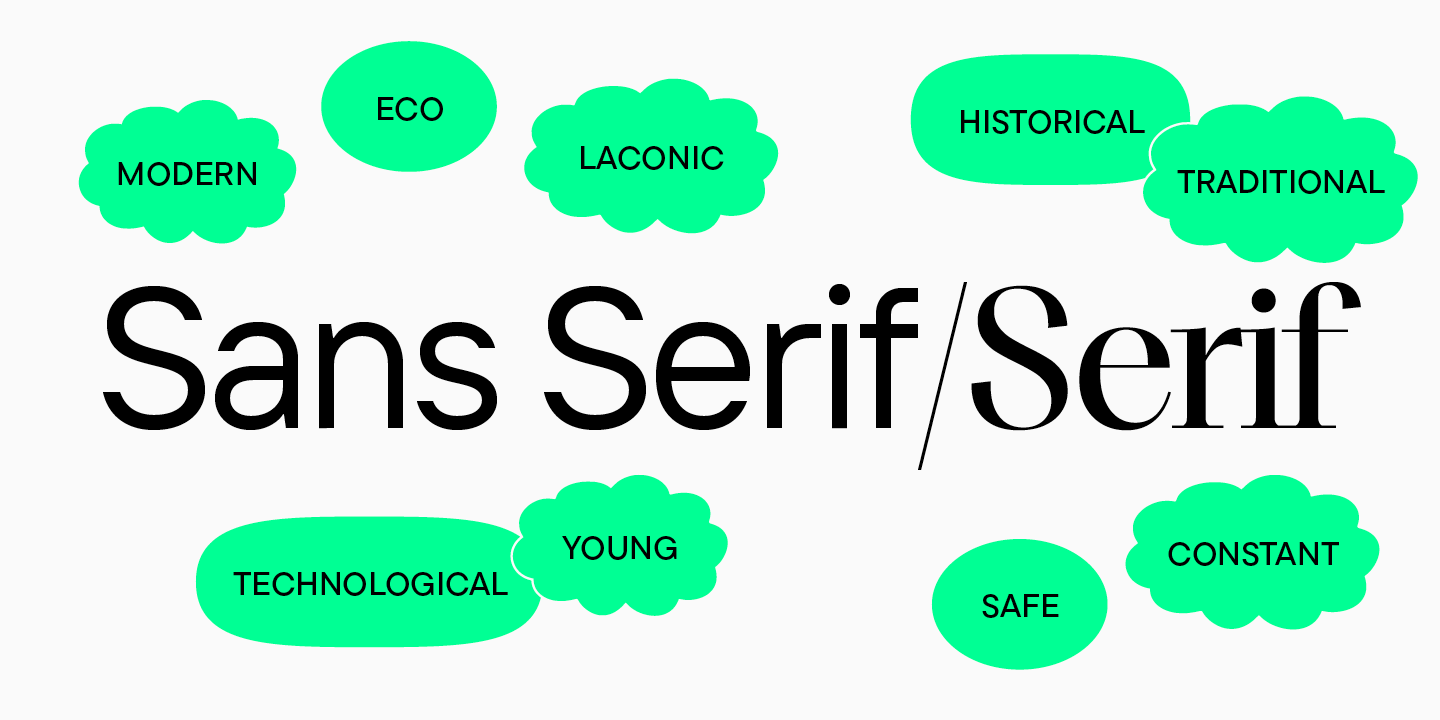
Para visualizar mejor qué tipografía podría encajar en tu proyecto, intenta analizar ejemplos de otras empresas y presta atención a las asociaciones que evoca la tipografía. Por ejemplo, para marcas modernas y juveniles enfocadas en la sostenibilidad y la tecnología, un grotesco con sus características minimalistas sería más adecuado. En cambio, una antigua armonizará perfectamente con empresas que destacan su historia de muchos años y tradiciones, o que buscan transmitir una sensación de confiabilidad y estabilidad.
Uso combinado de antiguas y grotescos
A veces, al elegir una tipografía, a los diseñadores se les ocurre la idea de utilizar varias tipografías a la vez, donde una puede ser un grotesco y otra una antigua. En realidad, esta combinación rara vez funciona, especialmente si las tipografías tienen caracteres muy diferentes.
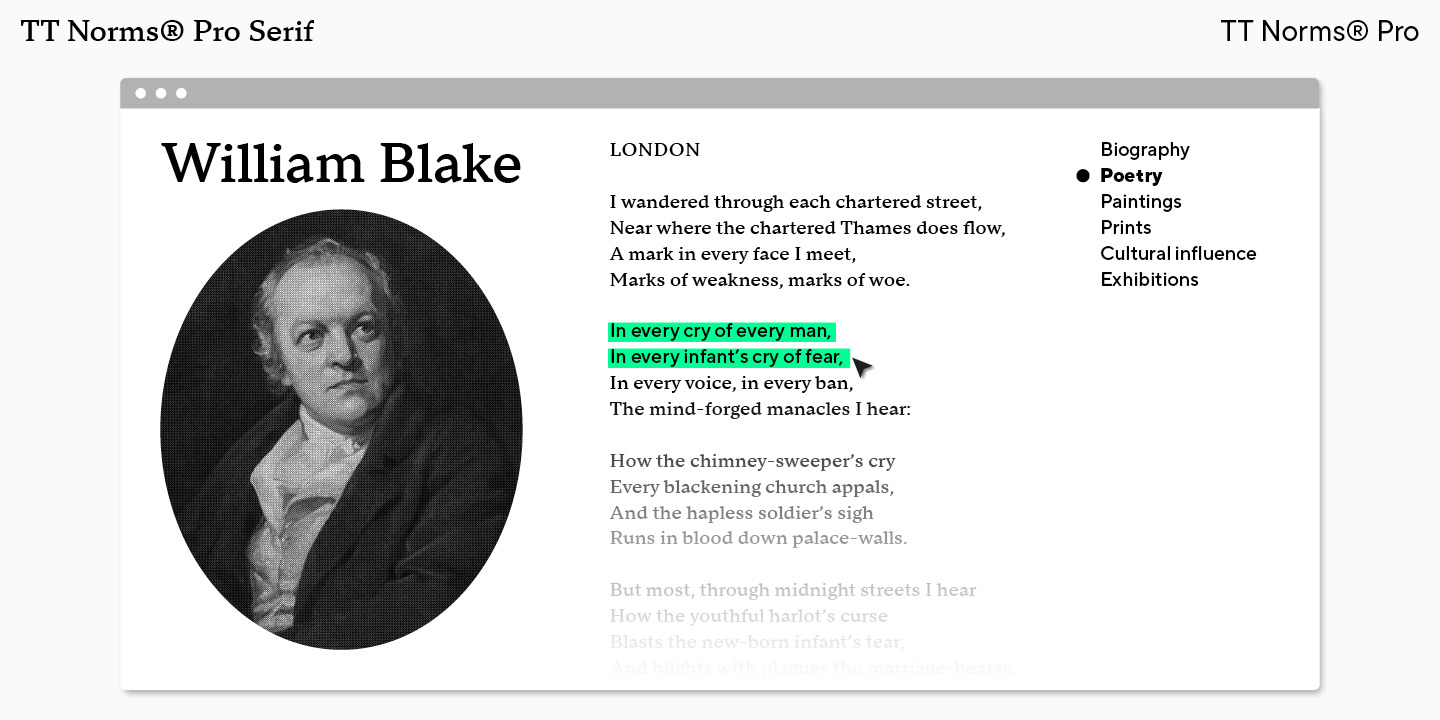
Es más seguro combinar una antigua y un grotesco del mismo conjunto tipográfico, ya que estas familias suelen estar diseñadas como una pareja tipográfica. Por ejemplo, en el catálogo de TypeType, puedes optar por TT Norms® Serif, una antigua desarrollada como parte de la amplia familia TT Norms®, un grotesco geométrico de carácter neutral.
Estereotipos sobre las antiguas y los grotescos
«El grotesco es una fuente aburrida, asociada con monótonas presentaciones de oficina, mientras que la antigua no puede ser moderna y hará que la marca parezca anticuada»: estos son estereotipos que aún persisten hoy en día.
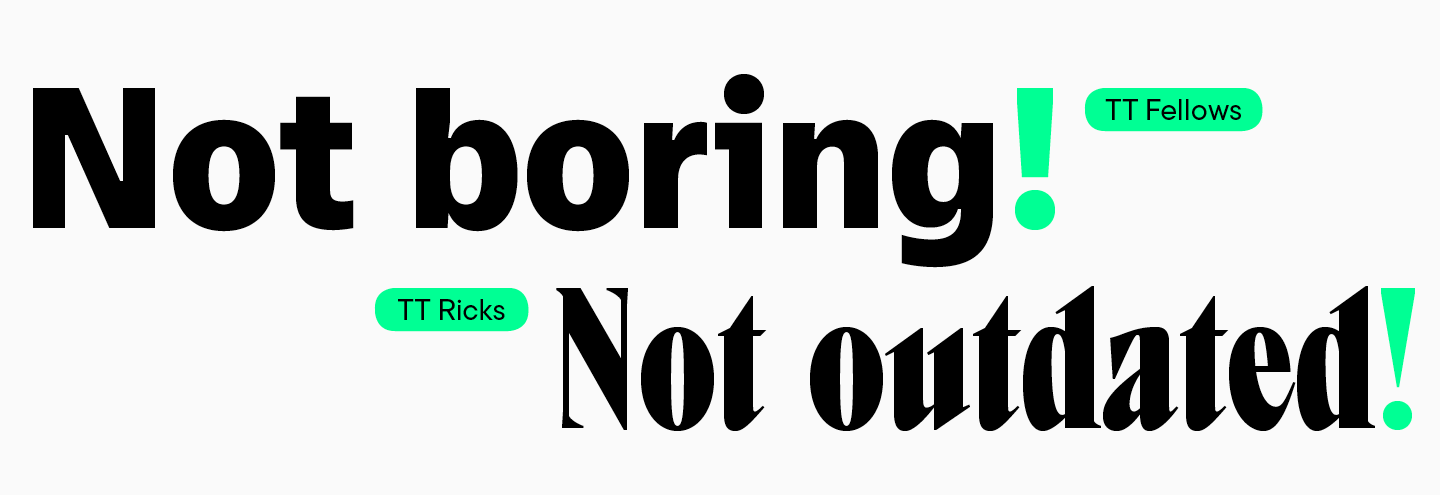
Sin embargo, los diseñadores tipográficos trabajan incansablemente para desmentir estos mitos y crear antiguas modernas y estéticas, así como grotescos elegantes con un carácter bien definido. Lo más importante es encontrar, entre la gran variedad de tipografías, aquella que encaje perfectamente con la identidad de la marca.
La elección final
La tipografía evoluciona constantemente, ofreciendo a los diseñadores una enorme variedad de fuentes nuevas. A veces, lo más difícil es no perderse en esta diversidad y determinar cuál es la elección adecuada.
Que este artículo sirva como guía y haga que la búsqueda de una tipografía sea más clara y emocionante.




